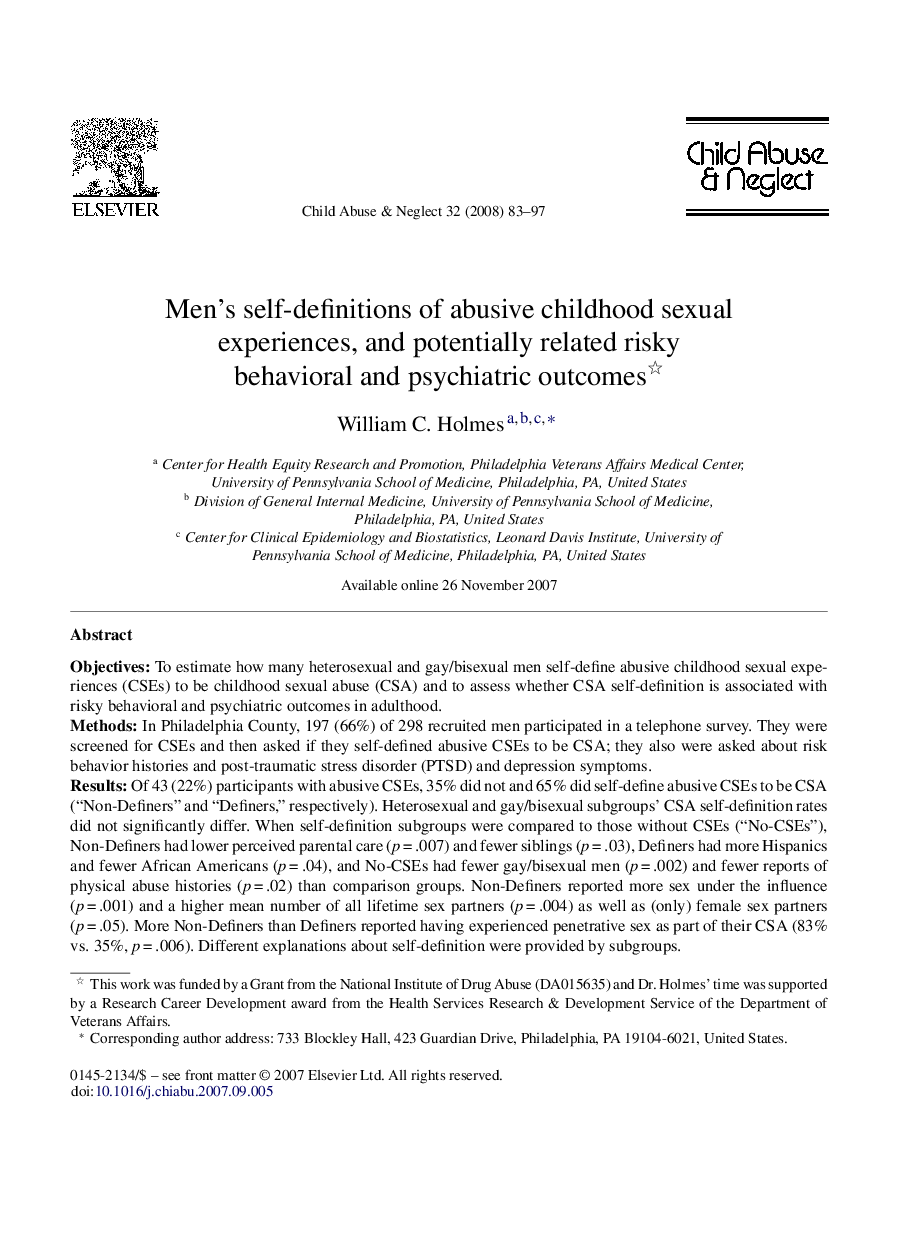| Article ID | Journal | Published Year | Pages | File Type |
|---|---|---|---|---|
| 345708 | Child Abuse & Neglect | 2008 | 15 Pages |
ObjectivesTo estimate how many heterosexual and gay/bisexual men self-define abusive childhood sexual experiences (CSEs) to be childhood sexual abuse (CSA) and to assess whether CSA self-definition is associated with risky behavioral and psychiatric outcomes in adulthood.MethodsIn Philadelphia County, 197 (66%) of 298 recruited men participated in a telephone survey. They were screened for CSEs and then asked if they self-defined abusive CSEs to be CSA; they also were asked about risk behavior histories and post-traumatic stress disorder (PTSD) and depression symptoms.ResultsOf 43 (22%) participants with abusive CSEs, 35% did not and 65% did self-define abusive CSEs to be CSA (“Non-Definers” and “Definers,” respectively). Heterosexual and gay/bisexual subgroups’ CSA self-definition rates did not significantly differ. When self-definition subgroups were compared to those without CSEs (“No-CSEs”), Non-Definers had lower perceived parental care (p = .007) and fewer siblings (p = .03), Definers had more Hispanics and fewer African Americans (p = .04), and No-CSEs had fewer gay/bisexual men (p = .002) and fewer reports of physical abuse histories (p = .02) than comparison groups. Non-Definers reported more sex under the influence (p = .001) and a higher mean number of all lifetime sex partners (p = .004) as well as (only) female sex partners (p = .05). More Non-Definers than Definers reported having experienced penetrative sex as part of their CSA (83% vs. 35%, p = .006). Different explanations about self-definition were provided by subgroups.ConclusionsMany men with abusive CSEs do not self-define these CSEs to be CSA, though not in a way that differs by sexual identity. The process by which men self-define their abusive CSEs to be CSA or not appears to be associated not only with self-explanations that differ by self-definition subgroup, but also with behavioral outcomes that impart risk to Non-Definers.
